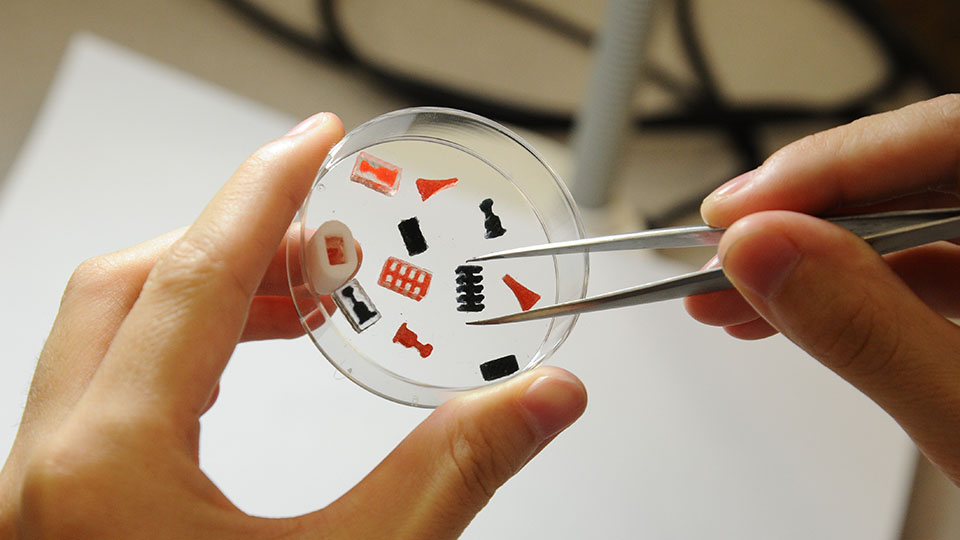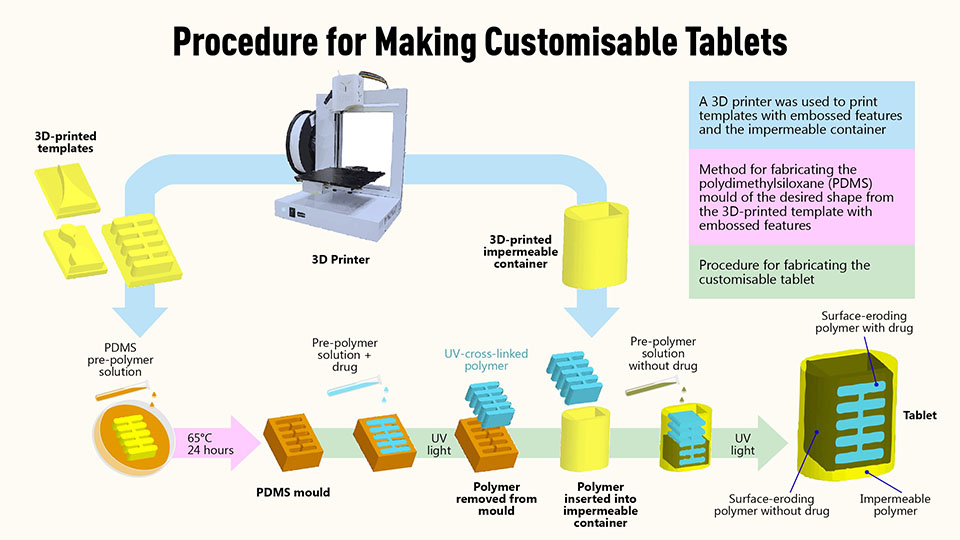Researchers Develop Customizable Pills with an Assist from 3D Printing

Latest News
May 27, 2016
Even if you don’t own one yourself, odds are high someone in your family has one of the long, extended pill containers with each day labelled on the top. Those simple, but incredibly useful, containers help people who need to take multiple drugs each day ensure they stay on track without requiring some kind of check list. Like all simple, but good, ideas, it’s hard to imagine a way to improve upon the design of the multi-day pill container, unless the solution is to eliminate it altogether.
Researchers at the National University of Singapore (NUS) may have developed a new system for manufacturing pills that will actually eliminate the container. Instead of taking multiple pills each day, or multiple pills several times a day, the system would allow people to take one pill that combines the effects of multiple pills in a single swallow. As is the case with many recent medical developments, the key behind the research is additive manufacturing (AM).
 Courtesy of NUS.
Courtesy of NUS.Although the idea of using 3D printing to build drugs isn’t unique, it’s still a relatively new concept. While 3D printed drugs are useful in a number of circumstances, they are currently limited to low dosages and have a tendency to dissolve fairly rapidly. Unlike companies such as Apprecia that are using the technology to directly print medicine, NUS’ approach takes advantage of AM’s flexibility to personalize medication without relying on it to build the actual pill.
The process begins with a doctor using a program to design the contents of the pill and the dosages required. Unlike other AM programs, this doesn’t require any CAD knowledge, but rather acts more like virtual Lego allowing doctors to construct a pill in the shape most conducive to a patient’s needs. From the NUS report:
The doctor or pharmacist draws a desired release profile in design software, which then instructs a three-dimensional (3D) printer to fashion a mould for the drug. This mould shapes drug-infused polymers of specific release profiles, which are placed into an impermeable casing. A solution of surface-eroding polymer, which solidifies when cured under UV light, fills the gaps in between.
As an example, for a patient that takes five pills each day, or is required to take one pill five times a day, the pill could be shaped with five prongs. Each prong is set to dissolve at a certain rate, ensuring all the day’s needs are accounted for in a single pill. This method of delivery can also assist with delivery of specific levels of a drug by ensuring a steady release of the drug over an extended period of time.
Below you’ll find a short video about 3D printing drugs.
Source: NUS
Subscribe to our FREE magazine, FREE email newsletters or both!
Latest News
About the Author
John NewmanJohn Newman is a Digital Engineering contributor who focuses on 3D printing. Contact him via [email protected] and read his posts on Rapid Ready Technology.
Follow DE





